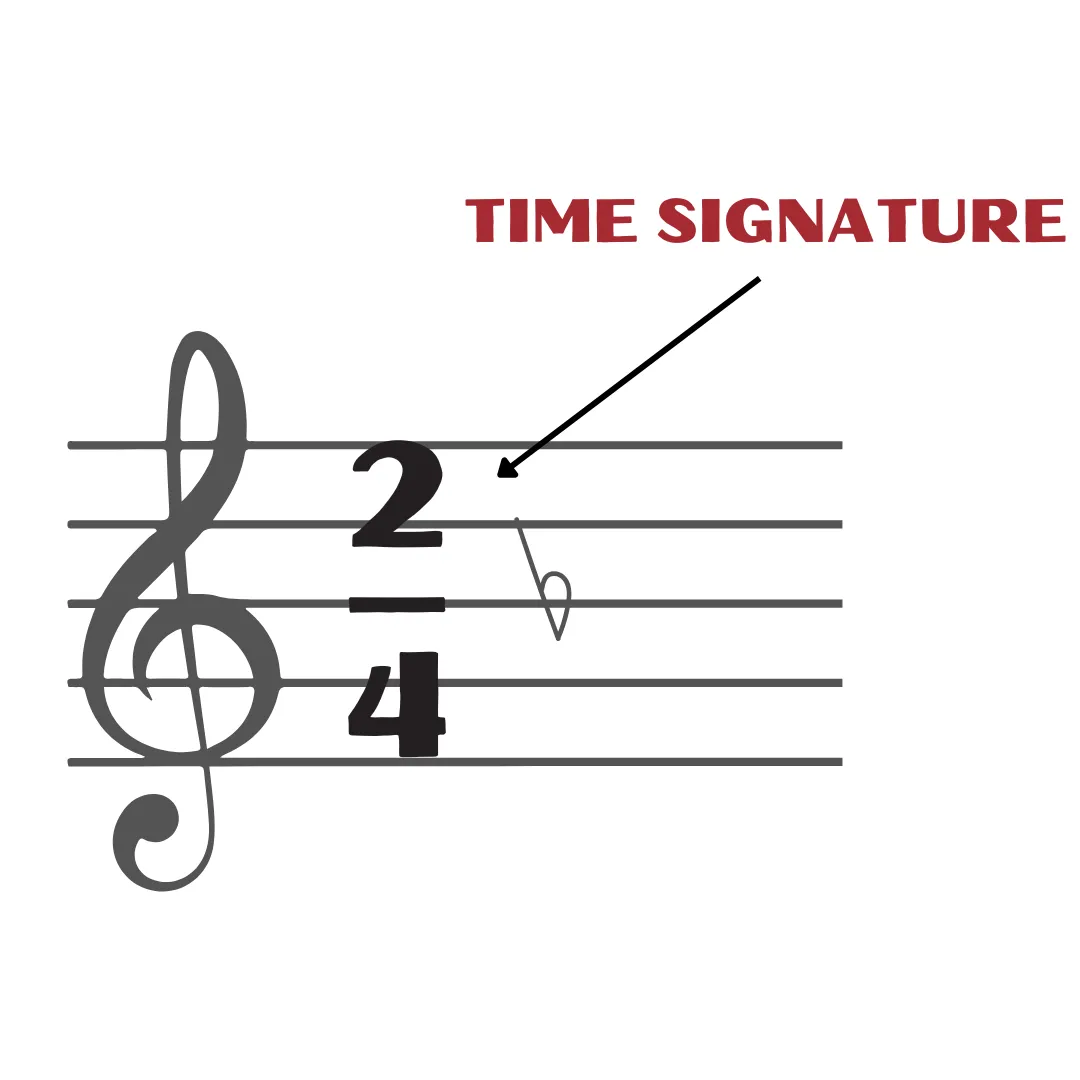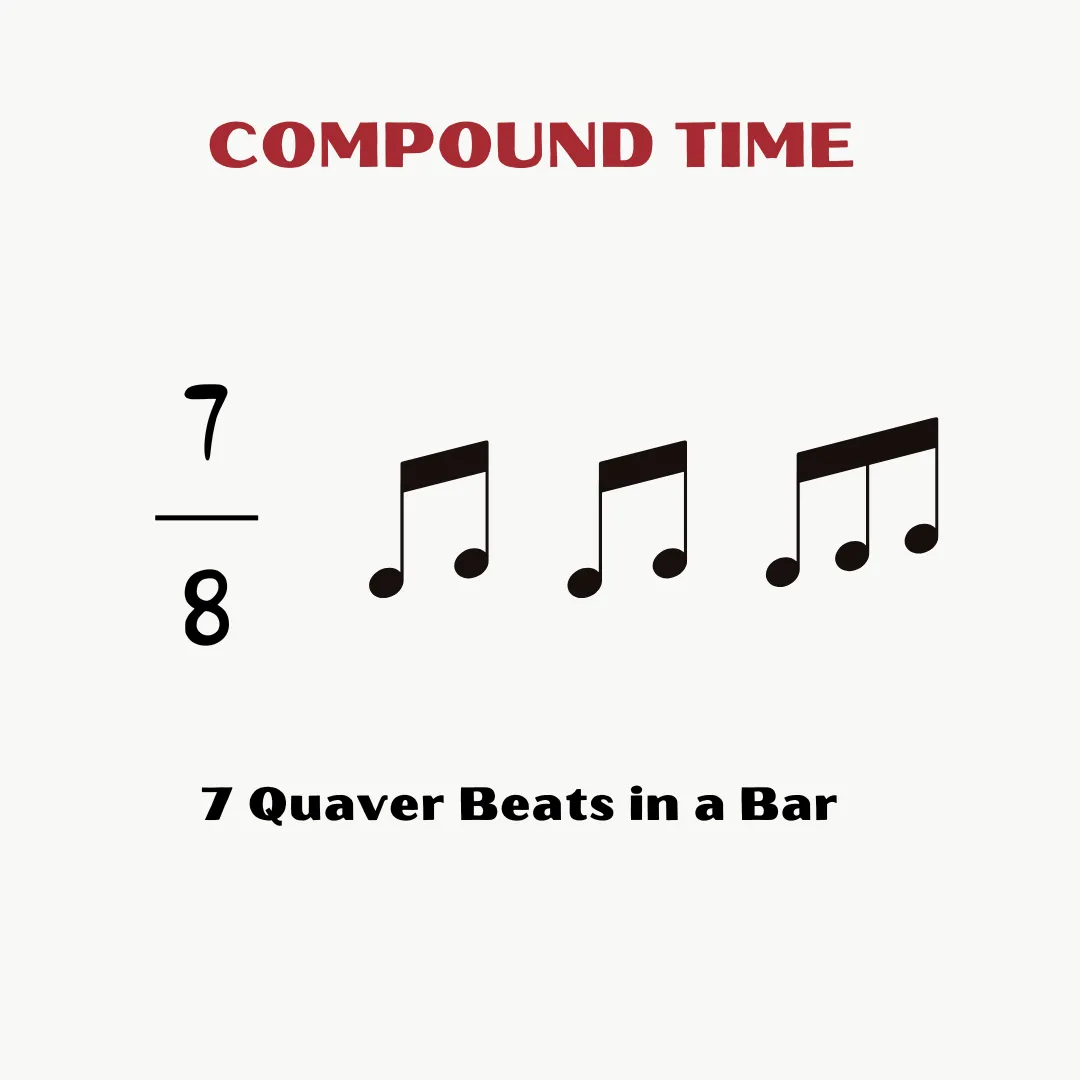To learn to read music one must know the musical notations. To visually present music we use different symbols and markings. These symbols and markings are a part of a system known as Musical notation. Which helps in informing the musicians on how to perform a musical piece. In this blog, we will cover one such musical notation known as the Time Signature.
What is Time Signature?
Time Signature refers to the number of beats that are present between a measure; and the note values of a beat. To put it simply, they are the two numbers that are present on the staff at the beginning of a music piece. It denotes how many beats or counts will be between one bar line and what value is given to one beat. Time Signature is also known as “Metre Signature” or “Measure Signature”. We use Time Signature and measure interchangeably.
The two numbers which represent the time signature are written one above the other.
- The first number /Upper number indicates the number of beats that are present between a measure.
- The Second / Lower number indicates the note value given to one beat. If the bottom number is 2 then the note value is half beats, if it is 4 then the note value is quarter beats and if it is 8 then the note value is eighth beats.

Time signatures can be categorised into different categories. They are based on the division of the beats in different groups simple signatures, compound signatures, and complex signatures.
Simple Time Signature
The time signature in which beats can be divided into two equal sections is known as a simple time signature. The most commonly used simple time signature is 2/4, 3/4, and 4/4.
4/4-time signature
4/4 Indicates that there are 4 beats in a measure. Also the note value of one beat is a quarter note (crotchet). We can also define it as 4 quarter notes (crochet) in a bar. 4/4 is also denoted by a capital “C” and it is called “Common Time”. Examples of songs with a 4/4-time signature are :“Smells like Teen Spirit” by Nirvana the song uses 4/4- time signature with the guitar part repeating after 4 counts. Another song with the same time signature is “One Love” by Bob Marley.
2/2-time signature
2/2 indicates that there are 2 beats in a measure. Also the note value of one beat is a half note (minim). We can also define it as 2 half notes (minim) in a bar. 2/2 is also known as “Cut Time” or “Alla breve”. It is absolutely half of the 4/4-time signature. It is denoted by a “C” with a line vertically passing through it. An example of a song with a 2/2-time signature is Symphony No.4 by Johannes Brahms. Symphony No. 4 starts with 2/2-time signature.
2/4-time signature
2/4 indicates that there are 2 beats in a measure. Also the note value of one beat is a quarter note (crotchet).We can also define it as 2 crotchet notes in a bar. An example of a song with a 2/4-time signature is the famous rock song “I Love Rock ‘N’ Roll” by “Joan Jett and the Blackhearts”. It uses a 2/4-time signature throughout the song.
3/4-time signature
3/4 indicates that there are 3 beats in a measure. Also the note value of one beat is a quarter note (crotchet). We can also define it as 3 crochet notes in a bar. Some examples of songs with a 3/4-time signature are “When the Party’s Over” by Billie Eilish. Another famous song is “Fallin” by Alicia Keys. . We can present 7/8-time signature can be presented on a music sheet in many different ways. The picture below shows one of the many ways.

Compound Time Signatures
The time signatures in which the beats are divided into 3 equal sections are known as Compound Time Signature.
6/8-time signature
6/8 indicates that there are 6 beats in a measure. Also the note value of one beat is an 8th note (quaver). We can also define it as 6 quaver notes in a bar. Some examples of songs with a 6/8-time signature are the country ballad “Blue Ain’t Your Colour” by Keith Urban. Another very famous song “Gravity” by John Mayer. . We can present 6/8-time signature can be presented on a music sheet in many different ways. The picture below shows one of the many ways.

9/8-time signature
9/8 indicates that there are 9 beats in a measure. Also the note value of one beat is an 8th note (quaver). We can also define it as 9 quaver notes in a bar. An example of a song a with a 9/8-time signature is the opening of “Chorale” from Cantata No.147 by Bach.
12/8-time signature
12/8 indicates that there are 12 beats in a measure. Also the note value of one beat is an 8th note (quaver). We can also define it as 12 quaver notes in a bar. An example of a song with a 12/8-time signature can be seen in the song “Happiness is a warm gun” by “The Beatles.”
Complex Time Signature
Time signature which cannot be equally divided are known as complex time signature. It is also known as asymmetric or irregular time signature.
5/4-time signature
5/4 Indicates that there are 5 beats in a measure. Also the note value of one beat is a quarter note (crotchet). We can also define it as 5 quarter notes (crochet) in a bar. An example of a song with a 5/4-time signature is the main theme for the movie “Mission Impossible” composed by Argentinian composer Lalo Schifrin.
7/4-time signature
7/4 Indicates that there are 7 beats in a measure. Also the note value of one beat is a quarter note (crotchet). We can also define it as 7 quarter notes (crochet) in a bar. An example of a song with a 7/4-time signature is the classic rock “Money” by Pink Floyd
7/8-time signature
7/8 indicates that there are 7 beats in a measure. Also the note value of one beat is an 8th note (quaver). We can also define it as 7 quaver notes in a bar. An example of a song with a 7/8-time signature the song “The Ocean” by Led Zeppelin. It uses the 7/8-time signature along with other time signatures. We can present 7/8-time signature can be presented on a music sheet in many different ways. The picture below shows one of the many ways.

Conclusion
Time signature is one of the most important musical notations in music. It helps in dividing the beats in different groups through the help of bar lines. This division is extremely important. As it prevents confusion and makes the process simpler when it comes to the visual representation of music, reading music and understanding music.
Check the following blogs for music theory lessons:





























